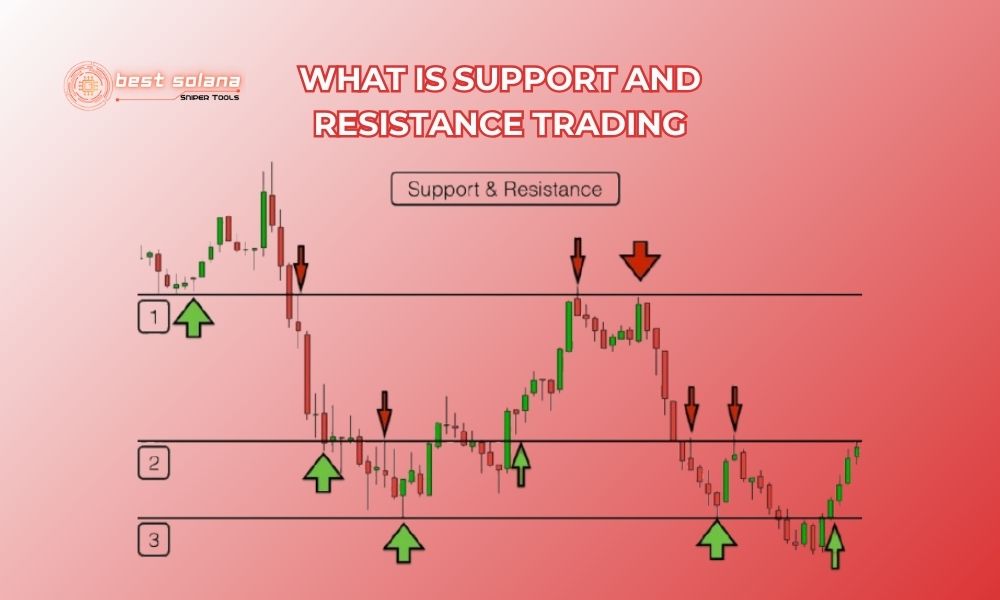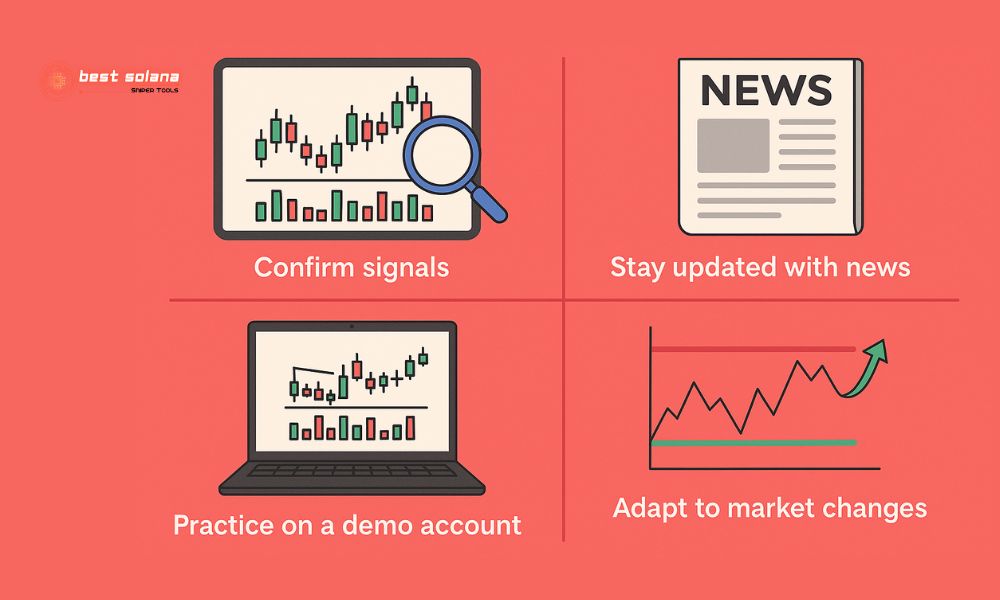What is support and resistance trading? It’s a powerful technical analysis method used by traders to identify key price levels where the market tends to reverse or continue its trend. This guide explores the concept, how to apply it, and tips to maximize profits in financial markets like stocks, forex, and cryptocurrencies.
What is support and resistance trading?
What is support and resistance trading? It’s a technical analysis strategy centered on identifying key price levels where market trends may pause or reverse. Support is a price zone where strong buying interest prevents further declines, acting as a floor. Resistance, conversely, is where selling pressure halts price increases, forming a ceiling.
For example, if a stock climbs from $10 to $12 and then retreats, $12 becomes resistance. If it consistently rebounds from $10, that’s support. By mastering these levels, traders can make informed decisions across markets like stocks, forex, and cryptocurrencies, optimizing entry and exit points for better outcomes.

How to identify support and resistance levels
Analyzing price charts: To understand what is support and resistance trading, start with price charts. Common tools include:
- Horizontal lines: Draw lines connecting the lowest (support) or highest (resistance) price points.
- Trendlines: Identify uptrends or downtrends to spot key price zones.
- Fibonacci retracement: Use Fibonacci ratios to predict potential support and resistance levels.
Monitoring trading volume: High trading volume at a specific price often confirms strong support or resistance. For example, a surge in buying volume at $10 may indicate a reliable support level in what is support and resistance trading.
Using technical indicators: Indicators like Moving Averages, Bollinger Bands, or RSI (Relative Strength Index) enhance what is support and resistance trading. For instance, the 50-day Moving Average often acts as dynamic support in an uptrend.
How to trade with support and resistance
- Trading at support: When the price hits a support level, traders can place buy orders, expecting a bounce. Confirm signals with bullish candlestick patterns or an oversold RSI to validate what is support and resistance trading.
- Trading at resistance: At resistance, traders may sell or short, anticipating a price drop. Look for signals like doji candles or declining volume to confirm moves in what is support and resistance trading.
- Breakout strategy: Sometimes, prices break through support or resistance, signaling a new trend. In what is support and resistance trading, traders can: Buy on resistance breakout: Enter a buy order when the price surpasses resistance with high volume. Sell on support breakdown: Place a sell order when the price falls below support with confirmation.
- Risk management: What is support and resistance trading without proper risk management? Always set stop-loss orders to limit losses. Aim for a risk/reward ratio of at least 1:2 for better outcomes.
Tips for effective support and resistance trading
Confirm signals: Relying solely on support or resistance isn’t enough. Combine candlestick patterns, indicators, and volume analysis to improve accuracy in what is support and resistance trading.
Stay updated with news: Market news can disrupt key levels. A negative earnings report, for example, may cause a stock to break support unexpectedly, affecting what is support and resistance trading.
Practice on a demo account: Before trading with real money, test what is support and resistance trading on a demo account to master identifying and trading key levels.
Adapt to market changes: Support and resistance levels shift as markets evolve. Regularly update your charts to stay aligned with what is support and resistance trading.

Advantages and limitations of support and resistance trading
Advantages
- User-friendly: Suitable for beginners and experienced traders.
- High accuracy: Helps pinpoint entry and exit points.
- Versatile: Applicable across timeframes and markets.
Limitations
- Not foolproof: Prices can break levels unexpectedly.
- Requires skill: Identifying accurate levels demands practice.
- News impact: External events can invalidate levels.
What is support and resistance trading? It’s a proven strategy for predicting price movements and making smarter trading decisions. By mastering how to identify and trade these key levels, you can boost profits while managing risks. Follow Best Solana Sniper Tools for more trading insights and strategies to elevate your skills!
